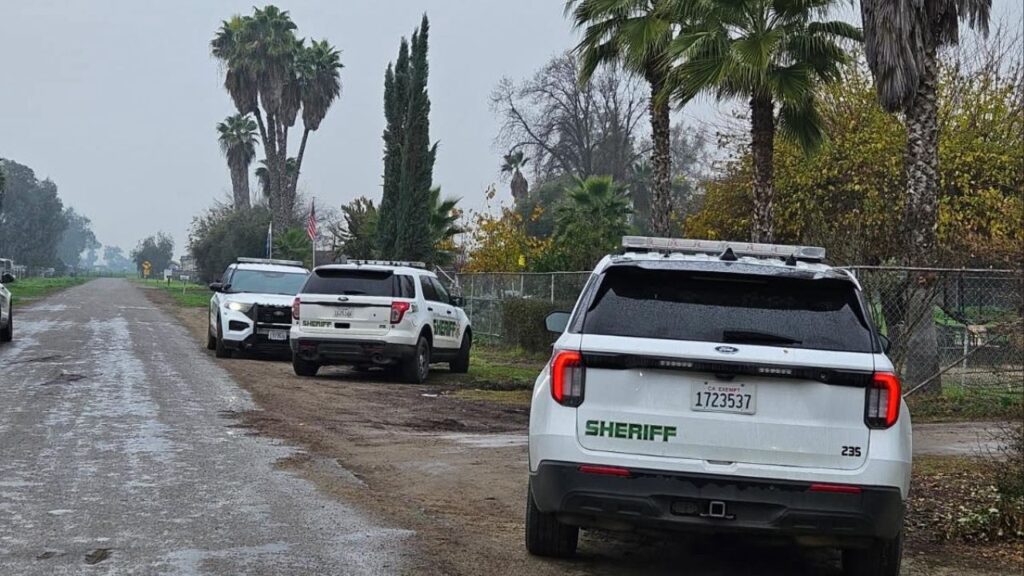U.S. Army soldiers with the 11th Airborne parachute from a C-17 Globemaster III during a combat training exercise near Mauna Loa, Hawaii, Oct. 7, 2024. The big and cumbersome Army is trying to transform itself to deploy quickly to Asia, in case of a war with China. (Kenny Holston/The New York Times)

- During a training exercise in Hawaii, a malfunction led to Pvt. Erik Partida’s 1,200-foot fall, resulting in severe spinal injuries.
- The U.S. Army’s exercise aimed to prepare troops for potential conflict with China, focusing on navigating challenging terrains and conditions.
- As China ramps up preparations for a possible Taiwan invasion, U.S. military planners emphasize the strategic complexity of defending the island.
Share
|
Getting your Trinity Audio player ready...
|
MAUNA LOA, Hawaii — Early one morning this month, 864 Army paratroopers bundled into C-17 transport planes at a base in Alaska and took off for a Great Power War exercise between three volcanic mountains on Hawaii’s Big Island.
Only 492 made it. Some of the C-17s had trouble with their doors, while others were forced to land early. A few of the parachutists who did make it sprained ankles or suffered head trauma. And one — a 19-year-old private — began to fall quickly when his chute did not open.
Across the field, shouts of “pull your reserve” could be heard before the young private hit the ground and medics ran to treat him. The horrifying scene and its aftermath encapsulate every jumper’s worst nightmare.
But Pvt. 2nd Class Erik Partida’s 1,200-foot fall was also a stark reality check as the U.S. Army transforms itself, and its hundreds of thousands of young men and women, for yet another war, this one a potential conflict with China.
The Pentagon calls it a Great Power War, and it would be exponentially more dangerous. It would put the world’s two strongest militaries — both of them nuclear superpowers — in direct conflict, possibly drawing in other nuclear adversaries, including North Korea and Russia. U.S. troops would be killed, in numbers that could possibly go beyond the toll from America’s deadliest conflicts.
Such a war would be fought on the ground, at sea, in the air and in space. So the Army is practicing for exactly that.
Forget the Marines, who can get anywhere quickly, because they travel light. Or the Navy, which practically lives in the Pacific. Those services, which featured heavily in the Pacific during World War II, have the planning for a conflict in Asia baked into their DNA.
But now, as the chances of war with China increase, the big and cumbersome Army is trying to transform itself after two decades of fighting terrorism in Afghanistan and the Middle East. Unlike the Taliban or other insurgents, China will have satellites that can see troop formations from the sky. The Army must, in essence, learn how to fly under the radar.
Former President Donald Trump and Vice President Kamala Harris have outlined vastly different approaches to Russia’s war in Ukraine. Their approaches to turmoil in the Middle East are also expected to be at least rhetorically different.
But no matter who wins in November, the United States will continue to prepare for war with China.
China has made clear that it will seek to expand its power in Asia, from militarizing uninhabited rocks in the Pacific to claiming sovereignty over international waters. And all of that starts with Taiwan, which President Xi Jinping has ordered the Chinese military to be ready to invade by 2027.
While Taiwan has its own defenses, military experts say it is difficult to see how the island would repel a Chinese invasion without U.S. help. Such a move would be a decision for whoever is president at the time, but American policymakers worry that staying out of it may not be an option if the United States wants to maintain its dominance.
‘Tyranny of Distance’
The U.S. Army knows how hard it would be to invade Taiwan.
During World War II, when the island was called Formosa and was occupied by Japan, the Joint Chiefs of Staff came up with Operation Causeway, an invasion plan that would give the United States a base closer to Japan from which to attack. Gen. Douglas MacArthur opposed invading Taiwan as too risky; it meant crossing a contested sea to fight on complex terrain against a well-defended army. Military planners said an amphibious assault on the island would have been far harder than the D-Day landings at Normandy.
Few Army planners think the Chinese military is ready to undertake an amphibious assault of Taiwan.
“The first thing you have to do is you have to generate an invasion force, which would be a pretty large force, to go onto an island which has a prepared defense,” Maj. Gen. Jeffrey A. VanAntwerp, the director of operations for the Army’s Pacific Command, said in an interview. “There’s 100 miles of Taiwan Straits that you have to get across, and you’re doing that in large transport vessels that are very vulnerable during that crossing.”
China would most likely use light amphibious vessels to try to secure a beachhead in Taiwan, military planners say, but those vessels would have to plow through heavily mined waters. And while air assault forces would probably try to target infrastructure, in the end there is no viable way to seize an island as large as Taiwan, with its own defenses and 23 million people, without putting a force on the ground — troops who would have to come by sea.
“You can’t do it without pushing a large landing force across the straits on ships,” VanAntwerp said. “There’s no other way.”
So China is working on it. Chinese military planners have repurposed civilian ferries to transport troops and equipment across the strait and are working to construct floating piers, U.S. officials say.
The Pentagon would not go into detail about how American trainers are helping Taiwan build defenses. But making clear to the Chinese that an amphibious assault would be fraught is part of the U.S. military’s deterrence plan.
Army officials also say they hope joint exercises with Pacific partners will show Chinese military officials all the capabilities that the United States has and can bring to bear.
The officials point out that more than a quarter of the service’s 450,000 active-duty troops are already tasked to the Pacific. But they define that region liberally, to encompass troops not only in Japan, South Korea and the Philippines but also in Alaska, Hawaii, Washington, Oregon and California. Taiwan is more than 6,000 miles from Joint Base Lewis-McChord near Tacoma, Washington, a separation the Army refers to as “the tyranny of distance.”
Docked in Pearl Harbor, the U.S. Army vessel Maj. Gen. Robert Smalls will be critical to getting all the apparatuses of the Army into the Pacific theater. The 300-foot-long ship, which recently arrived from Norfolk, Virginia, via the Panama Canal for the exercises, can beach itself, discharging 900 tons of vehicles and cargo — and, if necessary, troops — onto islands.
The Hawaii exercises, which ended in mid-October, were devised to replicate the conditions that troops can expect in a war with China. Gone were the desert-sand-colored fatigues that became de rigueur during the Afghanistan and Iraq wars. The troops in Hawaii wore jungle fatigues and face paint.
Troops worked on new maneuvers patched together from watching Ukraine fight Russia. They dismantled and moved large and cumbersome command and control operations in 20 to 30 minutes, and communicated with one another without using Army satellites, so that an adversary would not be able to pick up their conversations.
Learning how to advance in small teams that can attack and then dissipate into thin air was key. The Army sent to the troops 96 new rainforest-green infantry squad vehicles that can quickly move up to nine soldiers each through jungle terrain.
“It is so powerful to be able to send a company’s worth of personnel, which is about 130 people, on those vehicles, along multiple routes, and then at a point bring them together to attack the enemy, and then disappear in different directions,” said Maj. Gen. Marcus Evans, the 25th Infantry Division’s commander.
‘Pull Your Reserve’
The first of the 864 Army parachuters who took off from Alaska began appearing in the skies above the three volcanic mountains just after sunrise on Oct. 7.
From the ground, the sight could easily pass for an Army airborne commercial, as waves of jumpers shot out of the side of the C-17s and floated to earth, their chutes billowing. All of the soldiers were supposed to be equipped with two chutes, including a reserve if their primary chute did not deploy within four seconds after they jumped out of the plane.
Around 7:35 a.m., Lt. Col. Tim Alvarado, the commander of the garrison at the Pohakuloa Training Area, peered into the sun as the next C-17 approached.
“The paratroopers should be standing at this point; they would have gotten the 10-minute warning,” he said, narrating the jump for me. “The jump master is looking out, making sure there are no obstructions as the parachuters are getting ready to jump out.”
The C-17 roared overhead, and the jumpers started appearing like closed umbrellas that whooshed open in the sky as their chutes expanded. “Some of them get twisted up so they have to unwind their ropes so they don’t land awkwardly,” Alvarado continued.
Then, surveying the scene, he said, “That’s not right.”
Before us, what looked like a cigarette in the sky was falling in the midst of the canopy of ballooned parachutes. Above the jumper, Partida, air moved through his chute, creating a wiggly line. But the air did not inflate the chute.
“Pull your reserve,” Alvarado said quietly.
The reserve never deployed. Partida disappeared from view beneath a berm as he hit the ground.
Capt. Kaleigh Mullen, an Army doctor, started running. Medics stationed throughout the drop zone were doing the same.
Members of the Partida’s unit got to him first. He was calm and conscious, but his spine was damaged. Mullen arrived, panting from her seven-minute sprint. She and Maj. Mitch Marks, an Army physician assistant, propped up his neck and spine to make sure he did not suffer any additional damage.
“OK, so he was very talkative, and he was able to say that he didn’t have any pain,” Mullen told me later. She took his first set of vitals at 7:45 a.m., and by 8:20 the Black Hawk medevac helicopter was in flight, on its way to the hospital.
A statement released a day later provided few details. “An 11th Airborne Division soldier was injured in a training incident in Hawaii today,” it said. The release made no mention of the unopened chute or the reserve.
Nor did it mention that doctors later fused Partida’s vertebrae in multiple surgeries. Whether he will be able to walk again is not known.
Instead, the statement ended with a description of the purpose of the exercises, which included preparing paratroopers for “decisive action operations in the U.S. Army Pacific area of responsibility.”
–
This article originally appeared in The New York Times.
By Helene Cooper and Kenny Holston/Kenny Holston
c. 2024 The New York Times Company
RELATED TOPICS:
Categories



















